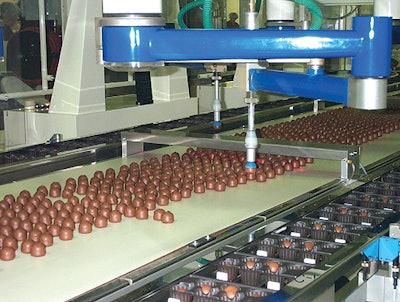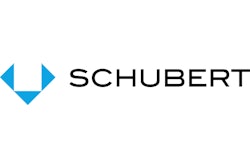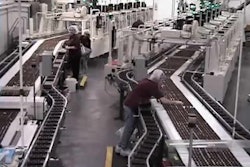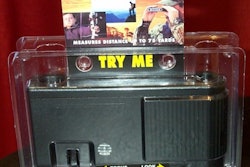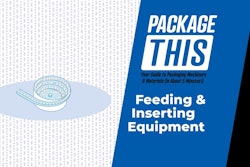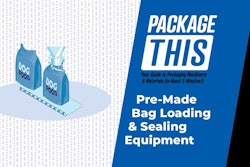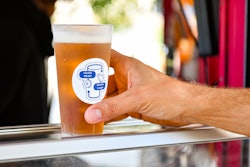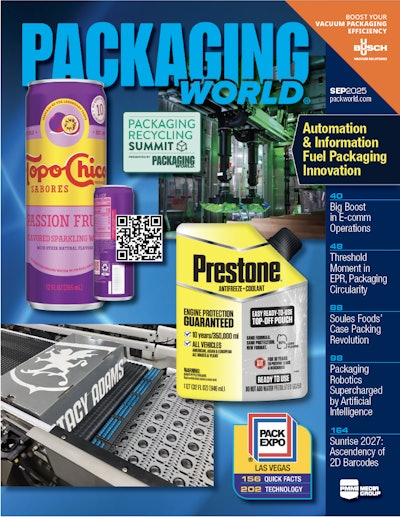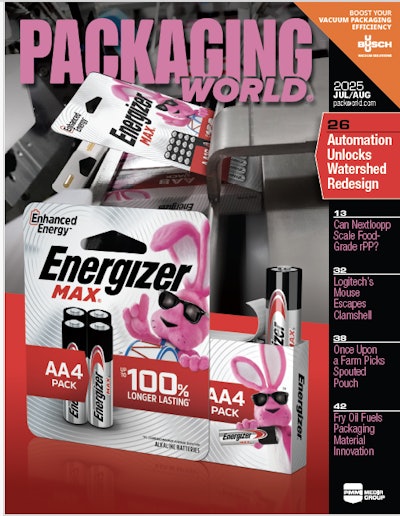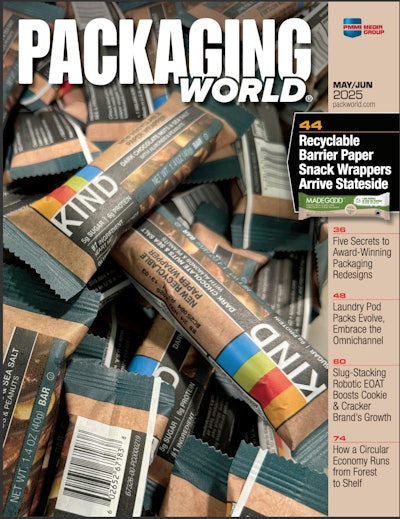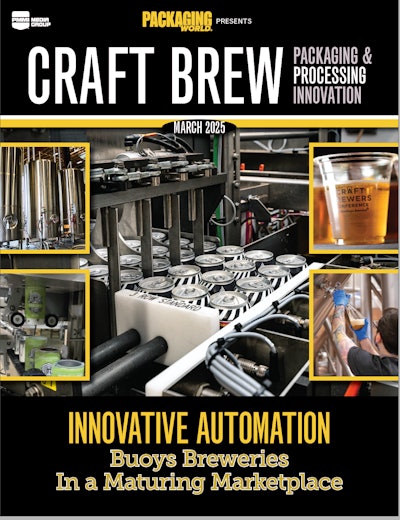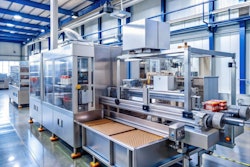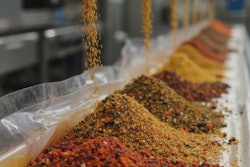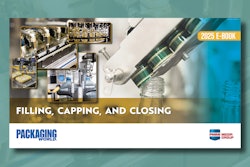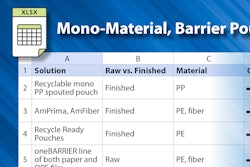Imagine six shoulder-to-shoulder workers on each side of two conveyor belts, picking and placing chocolate-covered cherries, or cordials, into six-count plastic trays. They work at an output of about 1꼀 cordials, or 300 trays, per minute. Hour after hour, month after month, it had been done this way since 1992 at Gray & Co., Hart, MI, home of Queen Anne brand cordials.
“If you recall the classic ‘I Love Lucy’ episode in the candy factory, then you have a pretty good idea of how that worked,” jokes vice president of operations Judd Marlatt. Or didn’t work so well sometimes.
That is, until the robots took over in early 2001. The difference has been like night and day for the 94-year-old company, which acquired Hershey’s chocolate-covered cherry business in 1991. The robots are an automation indicator of the company’s aggressive marketing that has tripled sales volumes and grown Gray’s market share to 63% over that time. Besides Marlatt, other key project members included operations manager Rick Dowty, special projects engineer Ben Kirwin, and maintenance manager Dale Guenthardt.
Robotic layout
The 4-axis SNC Model F-44 robots were built by Schubert in Germany and supplied by Schubert Packaging Systems (Addison, TX) as part of a pair of side-by-side 55’ x 10’ robotic systems, one per production line. The robots comprise twelve modules, six per line, perched above the cordial conveyor. Each module controls two arms poised above each side of the 3’-wide conveyor on which the cordials, in rows 14 across spaced ¼’’ apart, move at a rate of 10’/min.
Each robotic arm is picking and placing at rates to 90 pieces/min. “That’s faster and more accurate than each worker could do,” Marlatt points out. “It’s amazing, you can hardly see them in motion they are so fast.” At an average rate of 1.5 pieces/robot arm/sec, watching the robots in action is incredible, as Packaging World experienced during our on-site visit this summer. The 12 arms on each line pack a total of about 1갰 cordials/min into trays per line, or 2검 cordials/min total. Optimizing existing equipment has also allowed Gray to increase to this output versus manual packing.
The robot arm picks up cordials with a custom-designed, spring-loaded vacuum cup that addresses natural variances in the individual height of each cordial.
All of Queen Anne packaging is designed around the six-count, 4-oz trays. Products are sold as 4-, 8-, 16-, and 24-oz cartons, each loaded with from one to six trays per carton.
On each side of the product conveyors is a tray conveyor. It moves in the opposite direction of the cordial conveyor at a speed of 50’/min, bringing the sum flow of the pick-and-place operations to 60’/min. The patented counterflow movement, which at first blush seems counterproductive, makes perfect sense once it’s explained.
“It guarantees that the last robot, which has the least amount of product from which to pick, has the largest number of empty tray compartments available,” points out Marlatt. “It also means that the first robot, which has the fewest empty compartments available, has a full belt of cordials from which to pick.
“It’s simply faster and more efficient this way,” sums Marlatt. “The first and last units do the least amount of work, while the middle four units on each line do the most work.”
At the far end of the conveyor, opposite the infeed, is a Schubert servo-driven tray denester, which uses four vacuum cups to pick and place the trays into the indexing flights. There is one denester on each side of each cordial conveyor, for a total of four. The trays are thermoformed of brown, high-impact polystyrene.
How they work
The robots’ ‘vision’ is provided by a belt-wide infrared beam that scans up from beneath the polymeric conveyor belt. An array of sensors mounted in a housing over the conveyor receives the information from which the software can determine the shape and position of each cordial, which is expected to be in the shape of a circle. Those that are outside the target range are allowed to pass by all 12 robot arms, though Gray doesn’t require perfect, cookie-cutter cordials. “Consumers prefer a homemade look,” offers Rick Dowty.
Each line’s programmable logic controller stores and relays the data between each cell or pair of robot arms.
That’s matched up with the corresponding tray positioning information that the PLC receives. When a tray is denested onto the conveyor, the PLC registers that the tray in that specific position on the chain conveyor has six empty cavities.
As each tray is conveyed forward and is filled, the information is updated to the PLC by each of the six cells as to which cavities are filled.
As the master of the system, the lead robotic cell controls the conveyor speed. It can fill two cavities when the tray conveyor is at top speed; if three or more cavities are unfilled, it slows down the tray conveyor.
At the other end, that robot arm has to travel a greater distance for its picking and placing as there are very few cordials left on the conveyor. The pattern is not preset; the cordials are placed randomly into an empty compartment by the robots. The system’s proprietary software is from Schubert.
The flexibility of the robots and tray conveyor assembly is such that Gray could change to running trays of different dimensions quite easily and without requiring programming changes by Schubert, according to Marlatt. The robots could likewise be easily changed to placing products the size of cookies if needed, he adds.
Tray aerodynamics
Marlatt says that conveying of the empty trays, rather than something directly concerned with the robots, was one of the biggest challenges of the project. At higher speeds, the lightweight trays had a tendency to go airborne. In response, Gray tightened the specifications on the trays, specifically on the flange dimensions, which underscores the importance of consistency in materials for automatic machinery and for robotic pick-and-place applications in particular. “That’s in addition to the tightening of our processing specs,” adds Ben Kirwin.
As measured by the amount of “good” cordials not picked by a robot arm, efficiency is above 99%, Marlatt reports.
Displaced operators were relocated into other positions (see Q&A packworld/go/c057). A day or two after the startup in March 2001, all employees were invited to watch the robots in action. The results, according to Marlatt, were plenty of “oohs and aahs.”
The successful start-up of the robots completes a vision Marlatt and his associates have had since Pack Expo in 1994; that was when they first saw the robots in operation in a demonstration at the Schubert booth. Those dreams have turned into an impressive, productivity-boosting, cost-saving reality.
See sidebar to this article: Robotic advantages
See sidebar to this article: Did you know that...?
